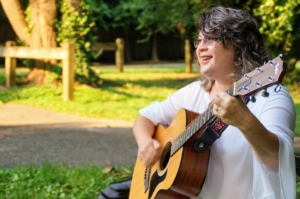Spaces and Spirit
Do we design spaces for our purposes or do we choose what we do because of the space? Does the space have good energy? Good lighting? Planners are always asking these questions, and they come to mind as we move from the end of the book of Exodus with all of the design details of building the mishkan (tabernacle) to the details of the sacrifices that begin the book of Leviticus.
The purpose of the mishkan was for God to have a dwelling place among the people. This tangible abode was to assure the people that God was with them, was protecting them, and keeping the covenant. And what was the purpose of the sacrifices? While they have names such as burnt offering, guilt offering, or sin offering with very particular instructions for the priests in the performance of the sacrifice, that tells us “what” more than “why”. Why did people offer animals and grain as sacrifices? The why is really about the relationship itself between the people and God. The sacrifices were to keep the relationship whole – if someone strayed, a sacrifice could bring him back into oneness with God. If someone had a great harvest, a sacrifice could express gratitude. The mishkan was the place to offer the sacrifice and thus designed to embody the inter-connectedness of God and the people.
More than 2000 years have passed since the destruction of the Second Temple in 70 C.E. and we seem to be both glad to have progressed beyond offering animals to God. Yet, we also feel disconnected from God, striving to feel God’s presence in our lives. The synagogue has replaced the mishkan while prayer and acts of lovingkindness replaced the sacrifices. As the question goes, “How’s that working for you?”
The Jewish Studio, as part of its operating philosophy, has thought programmatically first and space second, choosing spaces based on their ability to enhance the program. To facilitate connection to God, we look to programming in nature as most people more easily feel a spiritual connection when outdoors. To create a sense of intimacy and connection with each other, we design opportunities for easy interaction and exchange in small groups. Music and food (which were also plentiful in the ancient Temple) are essential elements to add in order to achieve communal connection and feel God’s presence. And we offer open hearts and open minds in our personal encounter seeing the divine in each other.
Synagogues communicate many things: A Jewish presence, a financial commitment and ability to support the Jewish community, the importance of worship, of celebration, of education. If we think about the architect Louis Sullivan’s approach of “form follows function” when it comes to Jewish space where does that take us? Might we change the form or the function? How do these buildings help us to seek and feel God’s presence? And the most challenging question for architects, builders and fundraisers – isn’t God’s presence best noticed outdoors? Let’s continue to experiment with the relationship between spaces and spirit.
JoHanna Potts






 Evan J. Krame was ordained as a rabbi by the
Evan J. Krame was ordained as a rabbi by the